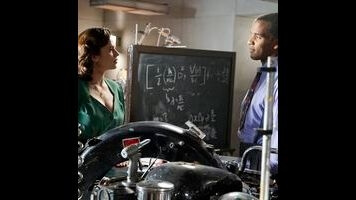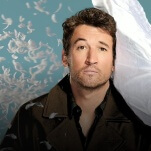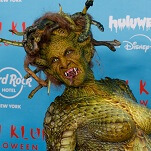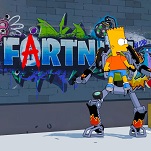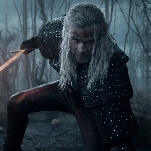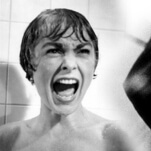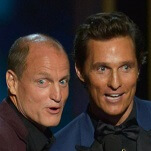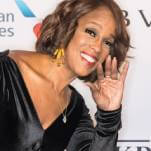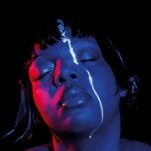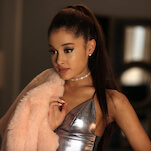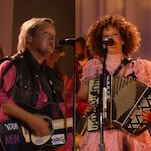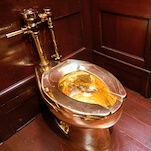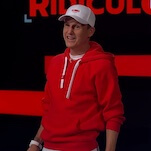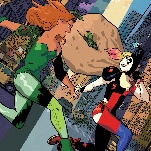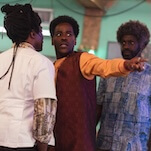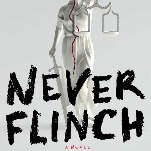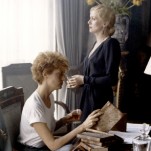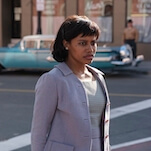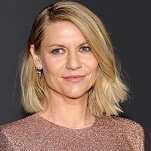After criticisms that the first season lacked diversity, Agent Carter added one person of color to its cast in season 2, and, as is the trend for Marvel’s TV shows, the series seemingly killed him off after two episodes. Agents Of S.H.I.E.L.D., Daredevil, and Jessica Jones have all used the deaths of black male characters to up the stakes for the other characters, and while some of these supposed deaths have been cliffhanger fake-outs, it’s still an unfortunate pattern. It’s getting to the point where whenever I see a prominent black male character on a Marvel TV series, I immediately wonder how the show is going to kill him off, or pretend to kill him off.
I say black male here because black men are Marvel’s primary way of diversifying a property. Representation for women of color has been abysmal in Marvel movies—Zoe Saldana is the only actress of color with a lead role in a Marvel movie, and she plays a green alien rather than someone who shares her Afro-Latina ethnicity—and it’s not much better on TV. Agents Of S.H.I.E.L.D. is the rare exception, starting with a cast that included Asian-American actresses Ming-Na Wen and Chloe Bennet as regulars, but no other Marvel TV series has had a woman of color in the main cast. (Rosario Dawson’s Claire Temple, despite playing a significant role in Daredevil, was a recurring special guest star.)
That finally changes with this year’s Luke Cage Netflix series, which features three women of color in the main cast (Alfre Woodard, Simone Missick, and Sônia Braga), but this slow crawl to diversity in the MCU is becoming more and more tedious, especially when combined with the high mortality rate for these characters of color. I mention all this because it’s disappointing that Agent Carter, a series with a strong feminist agenda, hasn’t seized the opportunity to introduce a woman of color to the cast with its move to Hollywood. After seeing how “Better Angels” uses real Hollywood figures history as inspiration for the characters, I’m imagining how much richer the story could be if it had analogs for actresses like Lena Horne or Rita Hayworth, who were at a distinct disadvantage because of their race and still found fame regardless.
I’m not judging this episode for what isn’t there in terms of women of color, but I am judging it for how it treats Dr. Jason Wilkes. He’s one of the lucky black men of Marvel TV that doesn’t die, but instead he’s been made invisible, silent, and noncorporeal, a condition he is in for much of the episode. This new state of being could be interpreted as a literal representation of Wilkes’ lack of agency and identity as a black man living in a racist society, perhaps as a direct allusion to Ralph Ellison’s groundbreaking 1952 novel Invisible Man, but the series is going to have to put a greater emphasis on racial dynamics if it wants to sell that metaphor.
There’s no big sociopolitical statement to be gleaned from the spectral Wilkes at this point; instead, there’s a black man that can’t be seen, heard, or touched, and the only way he becomes visible and audible is through the scientific expertise of a white man. Even after being sprayed with Howard Stark’s chemical solution, Wilkes still can’t be touched, which adds a significant obstacle for his budding relationship with Peggy, but also keeps him out of the action. He’s alive, but he’s a far less dynamic character than before, confined to Howard Stark’s lab where he tries to figure out how he can regain his physical form. The character was far more captivating when he didn’t have these limitations placed on him, and while his current situation adds more tension to the narrative, it’s too early to tell if it will be worth the loss.
On a more positive note, “Better Angels” does wonderful work incorporating the histories of both Hollywood and Marvel Comics in its story, and both histories combine in the depiction of Howard Stark. He’s the reverse Howard Hughes of the MCU, making a career in Hollywood after building a name for himself designing weaponry and technology for the U.S. government, and he’s directing a western based on Kid Colt, the Marvel Comics series that ran for over 30 years. It’s a great shout-out for fans of Marvel’s western characters, and it also leads to this excellent exchange between Peggy and Howard:
Howard: You want to play a sassy beer wench?
Peggy: I’d rather be the cowboy.
Howard: I like it. I don’t think the audience is ready yet.
Peggy: But they’re ready for a movie based on a comic book? Sounds like a dreadful idea!
It’s not very subtle dialogue, but it is very fun, and I appreciate writer Jose Molina’s willingness to criticize one of Marvel Studios’ biggest flaws. The conversation points out how little Hollywood has changed in regards to representation of women, and even though the movie industry has fully embraced adaptations of comic-book properties, having a woman in the central role is still a very hard sell decades later.
The difficulty of being a woman in Hollywood plays a major part in the story of Whitney Frost, who is dealing with an ageist studio that wants to replace her for a fresher face and a husband who wants to use her fame for political gain before turning her into a baby-making machine when she retires from acting. Whitney’s also dealing with an outbreak of zero matter on her face, a cosmetic flaw that proves to have deadly side effects when it’s touched by the director of Whitney’s current film. The zero matter courses throughout him and disintegrates him into a black cloud that Whitney then sucks back into her body, killing the man and increasing the size of the dark mark on her face. It’s a chilling scene—the comedy and tragedy masks on the wall behind Whitney as she looks in the mirror are a great touch—but it’s not the only big development for the character this week.
Like Howard Stark, Whitney Frost is an analog for another real-world Hollywood figure: Hedy Lamarr, the actress who helped invent a radio guidance system for World War II’s Allied forces and inadvertently paved the way for modern wireless technology. Also like Stark, Whitney’s path is the opposite of her real-world inspiration. Whereas Hedy Lamarr jumped from acting to inventing, Whitney was born Agnes Cully and helped put Isodyne on the map with her work as the Midwest’s Marie Curie, then reinvented herself as Whitney Frost in Hollywood. That’s a fascinating transition, and I’m excited to learn more about the specifics that led Agnes down the path to becoming Whitney.
Agent Carter has always been a more visually engaging series than Agents Of S.H.I.E.L.D., and the jump to Hollywood has elevated the design, direction, and camerawork. All three elements are spotlighted in the opening shot of “Better Angels,” which begins with an establishing shot of a row of palm trees and tilts down to reveal Sousa’s car driving down a street lined with period-appropriate automobiles and cookie-cutter houses. That opening shot gives a strong impression of the setting and the climate, and the framing of the trees, along with that of the cars and houses below, creates a sense of uniformity that dictates how people should act. Homes, cars, landscaping, it’s all being homogenized, which is a bad thing for people that don’t fit the norm.
There are a lot of creative visual moments in this episode, like Howard Stark holding a Kid Colt comic up to his movie set to show how the set perfectly lines up with the art on the cover. There’s a wave of striking costume designs when Howard invites a crowd of women into the lounge of the Arena Club, a shady organization composed entirely of wealthy white men, and the increased energy of the room is reflected in the camera, which becomes more active as it moves across the lounge to show various snapshots of the chaos: Jarvis making martinis, the host calling for security, Howard charming a group of women. Setting the story in Hollywood has inspired the creative team to give the series more dramatic, cinematic look, and even though there are some aspects of the plot that need work, the heightened style makes any flaws easier to bear.
Stray observations
- If you’re interested in learning more about Hollywood history, I highly recommend listening to Karina Longworth’s podcast You Must Remember This, featuring lost and/or forgotten tales from Hollywood’s first century. There’s a great episode on Hedy Lamarr, and an entire series on Howard Hughes.
- Kid Colt is a historical figure in the MCU, and now I’m wishing there was a Legends Of Tomorrow-style Marvel series that jumps through time. Legends is actually doing a western episode with Jonah Hex, so I’ll just have to watch that to get my cowboy superhero fix.
- Just how many times have women kidnapped Howard Stark at gunpoint?
- Real-life Hollywood references in this episode: Arlene French, Irene Dunne, Cary Grant, The Frolic Room
- Jarvis gets the opportunity to fight someone this week and he does a pretty good job! Yay, Jarvis!
- What happened to Rose and Ana? Their presence was sorely missed in this male-heavy episode.
- “A spy that hides every bit of incriminating evidence in one easily discovered place? I don’t believe it for one moment.”
- “Well I’ve seen old Ellie’s threshold. I believe you’ve made the right choice.”
- “I’m so sorry! I get really confused around books.”
- “You are so afraid of ruffling powerful feathers that you’re doing what you always do: burying an ugly truth and hoping someone will pin a medal on you.” The Thompson thread is the least interesting thing about this season, so this takedown by Peggy made me very happy.
- “Come on, it’s the Strategic Scientific Reserve.”
